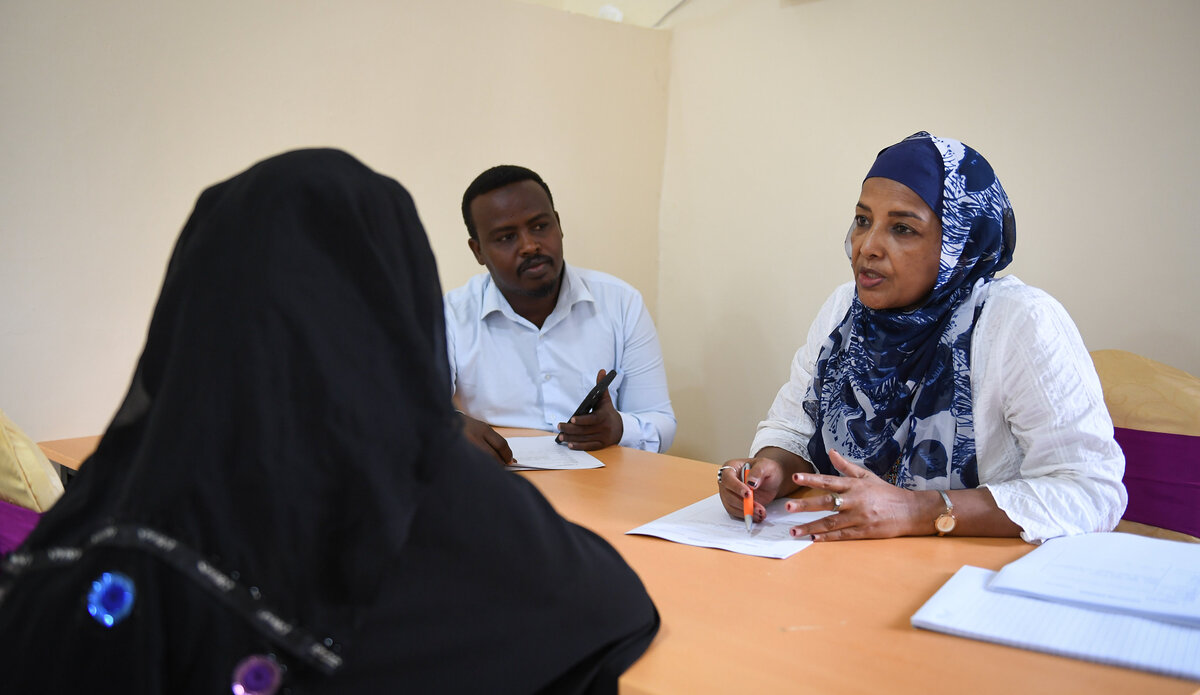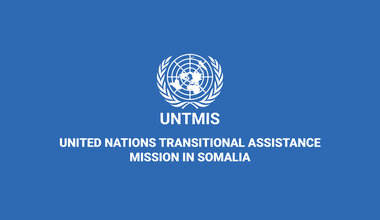Photo Story: A day with human rights officers in Garowe
Garowe – Located in northern Somalia, Garowe is home to close to an estimated half a million residents.
Of these, nearly 75,000 people are internally displaced due to climate change and conflict.
Often, these people—known as internally displaced people, or IDPs—have lost everything, from family members to homes, from livelihoods to hope.
According to the United Nations Office for the Coordination of Humanitarian Affairs (OCHA), the number of IDPs in Garowe has surged by around 20,000 since December 2022 as a result of the intense fighting in nearby Laascaanood, located 127 kilometres away in the eastern part of the Sool region.
The conflict has caused a significant displacement of people with estimates ranging from 154,000 to 203,000, according to various sources. Displaced families have suffered the loss of their homes, access to basic services such as education and healthcare, their sources of income, and, sadly in some cases, even family members through death or separation while fleeing.
Part of the field work of the United Nations in Somalia involves monitoring how human rights principles and international humanitarian law obligations are being respected in situations of conflict and insecurity. For that purpose, those fleeing from conflict areas are often interviewed in collaboration with Somali and international partners.
The interviews also seek to understand the special needs of the communities at risk, including women, marginalized people and people with disabilities.
This was the situation recently with a human rights team in Garowe, the capital of the northern Federal Member State of Puntland, and to where IDPs recently have fled in order to escape the heavy and frequent armed clashes that have been ravaging Laascaanood.
The following photo story provides a snapshot of the team’s recent activities in response to the IDP influx into Garowe.
*****
8:00 a.m. – The team, led by human rights officer Muna Bakri Mohamed Abuagla, gathers for an early morning meeting to discuss activities for the week. The focus is on the large number of people displaced by the conflict in nearby Laascaanood.
Shown here, Ms. Abuagla starts outlining the plan for the day to the team, which includes colleagues flown up from Mogadishu to bolster local efforts.
“The purpose of this mission is to understand the impact of the clashes in Laascaanood on civilian populations and advocate for the protection of human rights,” Ms. Abuagla tells them.
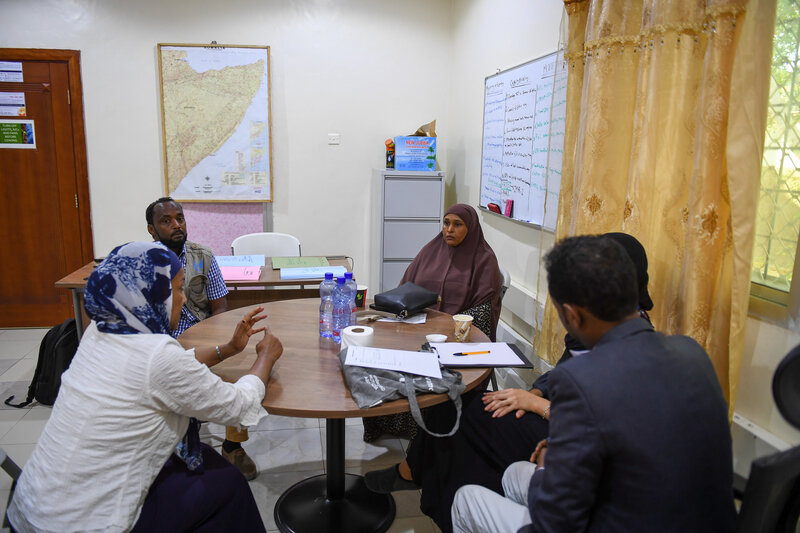
8:30 a.m. – Most of the IDPs in Garowe have managed to find shelter with relatives or are renting rooms in houses provided by host communities. In order to streamline the investigation process, the human rights team arranges to meet them in batches at selected locations around the city.
Shown here, as the team members drive through the streets of Garowe on their way to the meeting points, they see a timely reminder of the impact of conflict: they pass a group of women gathered outside a hospital where family members are being treated for injuries sustained as a result of the conflict in Laascaanood.
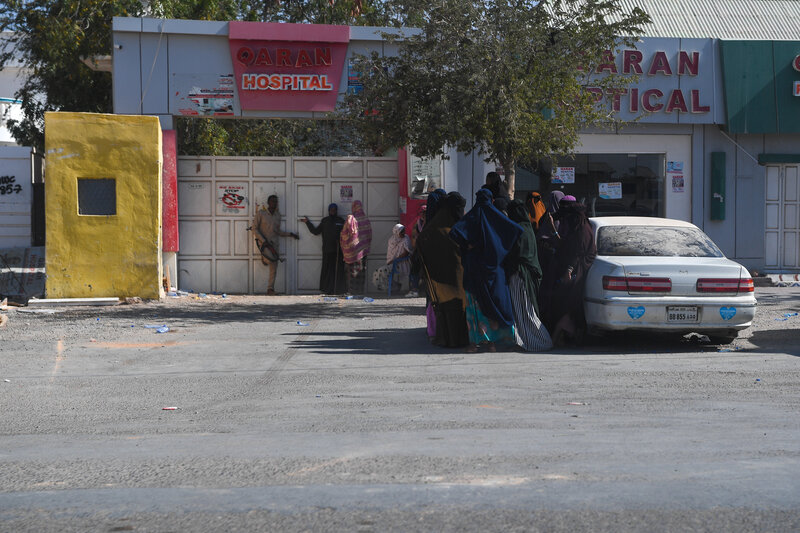
8:45 a.m. – Arriving at one of the meeting locations, the human rights team splits into groups and gets to work: interviewing the IDPs.
The purpose of the interviews is to get first-hand testimonies about the impact of the recent violence in Laascaanood on the civilian population to seek and advocate for the protection of civilians.
Shown here, a UN human rights officer interviews one of the displaced women from Laascaanood.
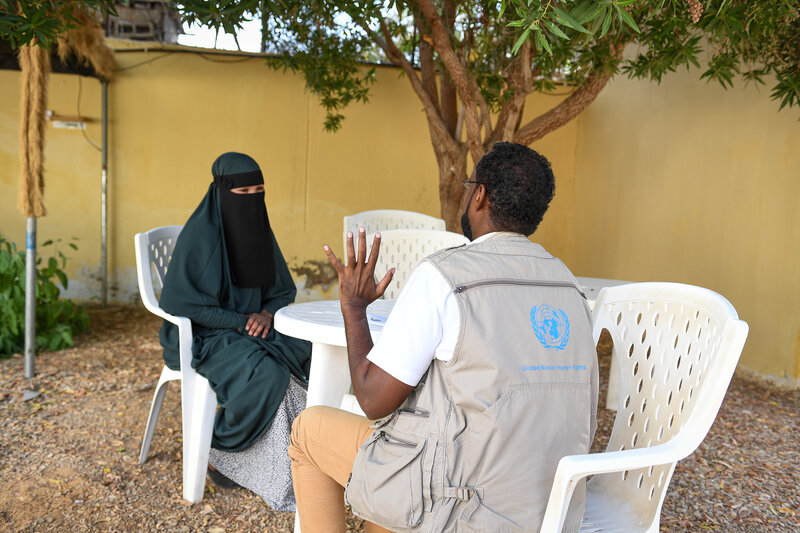
Her work is part of the UN’s efforts to ensure that no one is left behind, which refers to the central, transformative promise of the 2030 Agenda for Sustainable Development and its Sustainable Development Goals (SDGs). The 2030 Agenda represents the commitment of all UN Member States to eradicate poverty in all its forms, end discrimination and exclusion, and reduce the inequalities and vulnerabilities that leave people behind and undermine the potential of individuals and of humanity as a whole.
The SDGs are a universal call to action to end poverty, protect the planet and improve the lives and prospects of everyone everywhere, and were adopted by all UN Member States in 2015 as part of the 2030 Agenda, which sets out a 15-year plan to achieve the SDGs.
11:00 a.m. – The interviews are often not easy, for both the interviewee and the interviewer – they often involve recounting traumatic experiences.
"My eldest son got injured during the heavy fighting in the first week of February. I had to find a way to get my wife and six other children out before things got worse. We took the longest route to get to Garowe – most of it by foot. My biggest nightmare is that I don't have shelter at the moment. I am still suffering from the trauma of all the things that happened in my town," 45-year-old Musse Ahmed, a teacher from Laascaanood, says in his interview.
Shown here, after his interview, Mr. Ahmed lays out his makeshift bed for the night on a street in Garowe.
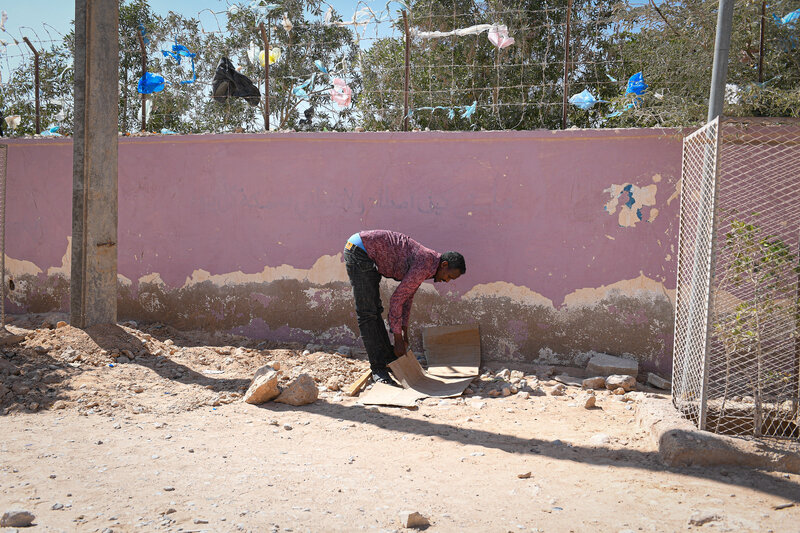
11:45 a.m. – Unfortunately, experiences like that of Mr. Ahmed are far from unique.
In another interview, 36-year-old Amina Abdirahman notes that escaping the fighting involved splitting up her family.
"I had to leave my older children with my mother so that they can continue with their education. My biggest concern at the moment is that we don't have enough food to sustain us all as we share the little we have with three other families in the same compound,” she says.
Shown here, Ms. Abdirahman speaks with some of her children at her host family’s home in Garowe.
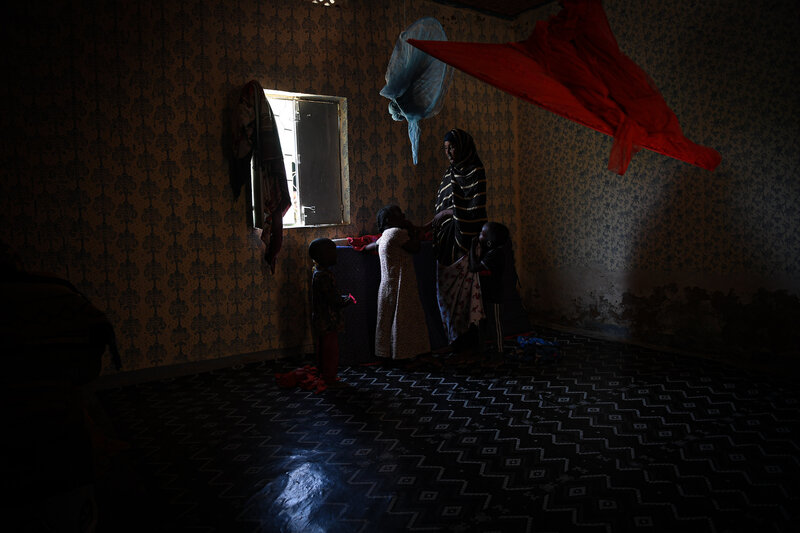
2:00 p.m. – Once the first round of interviews is over by mid-afternoon, the human rights team gets together and heads over to more locations where IDPs are living, as well as to the Garowe General Hospital, to interview some of the injured and their families.
The hospital, which is still under construction, has limited capacity to accommodate the stream of injured people who have been arriving regularly since heavy fighting began in Laascaanood in early February.
What they hear and see can be bracing. Shown here, a mother cares for her 11-year-old child who was wounded by shrapnel in a mortar attack in Laascaanood.
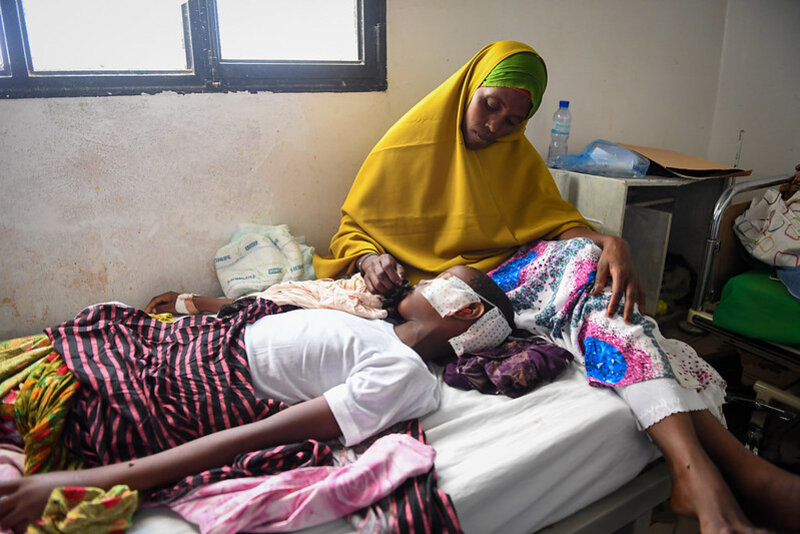
3:30 p.m. – After the hospital visit, the human rights team heads back into the city centre, where it has a meeting scheduled with Said Abdilmumin, the chairperson of the Office of Puntland Human Rights Defender – the country’s only national human rights institution – to get his perspective on the situation of human rights, in particular the resources currently in place to provide health care and broader support for IDPs, including school enrolment for displaced children.
“Hospitals are full to capacity with a shortage of medical supplies and personnel. Only 13 ambulances are working and there are limited medics to attend to the injured who are coming in from Laascaanood on a daily basis,” Mr. Abdilmumin tells the UN team.
Shown here, members of the UN human rights team meet with Mr. Abdilmumin.
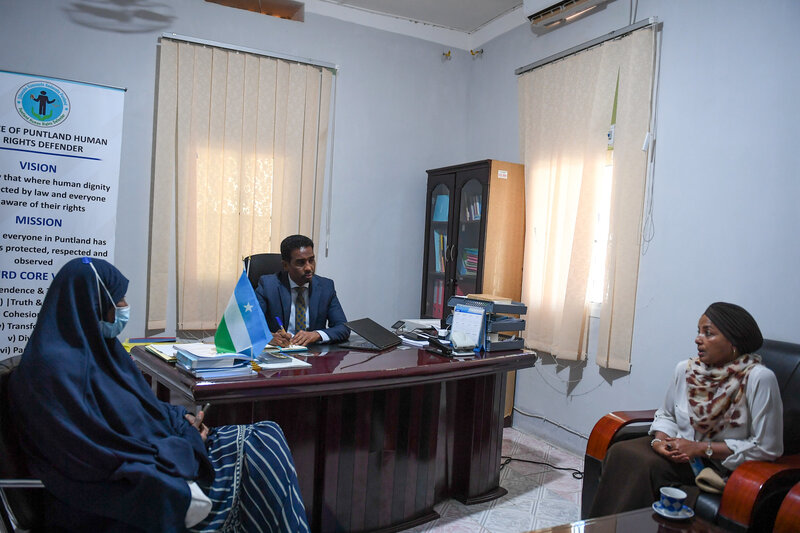
4:30 p.m. – With the day’s round of interviews and meetings done, the human rights team makes its way back to the UN Compound in Garowe.
But their work is not yet finished. In fact, it goes on into the night.
The team members now begin compiling the information they gathered throughout the day into reports that will be used to document complaints about alleged human rights violations. These will be used for human rights advocacy efforts at national and international levels.
As soon as they are finished with drafting their reports and confirming the arrangements for their next visits, they enjoy a quick meal and get some rest – tomorrow is a new day and they will be continuing their interviews with other Laascaanood IDPs in Garowe then, and, in the days that follow, in the nearby towns of Buurtinle and Qardho.
“Hearing hours of testimony can be draining but the information we get from these interviews is crucial for us to be able to gain a better understanding of the situation in Laascaanood, particularly with the protection of civilians,” says Ms. Abuagla.
Shown here, Ms. Abuagla passes through the entrance to the UN Compound in Garowe after a day of interviews with IDPs.
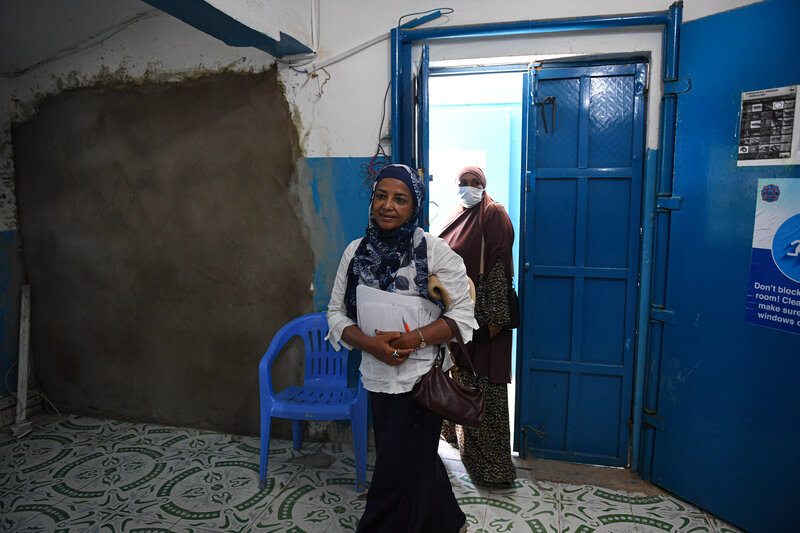
 UN
UN
